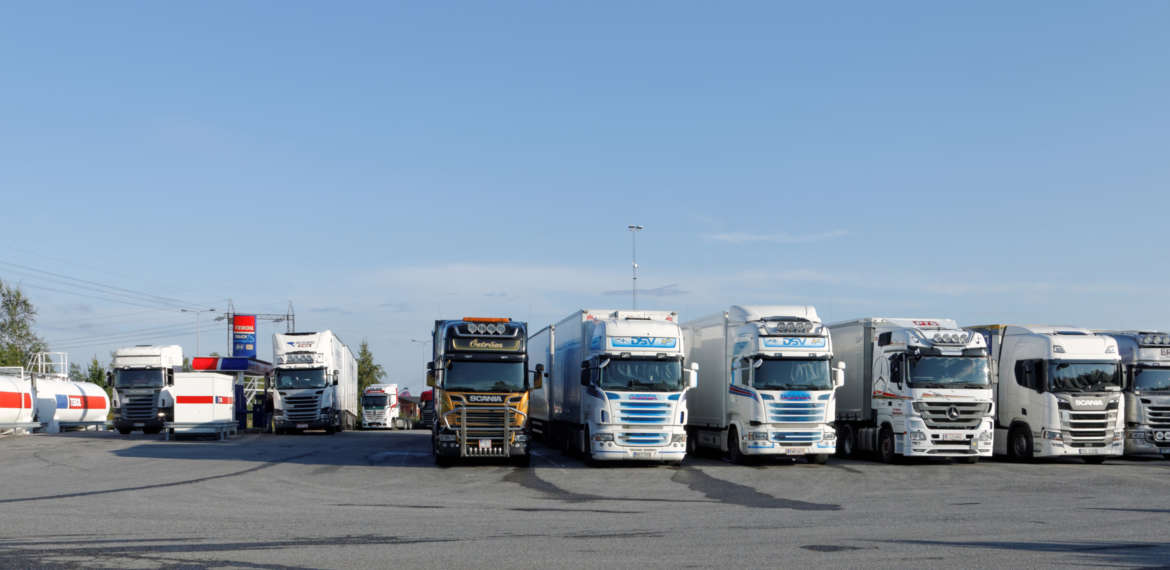More rest areas needed for heavy vehicles
There are tens of thousands of heavy vehicles driving on Finnish roads every day, carrying goods reliably to shops, production plants, and private consumers. The continuously increasing road transports have given rise to worries on sufficient number of rest areas for drivers of heavy vehicles. A lot more truck stops are needed, and their service level needs to be improved. That will guarantee efficient logistics and safe and smooth road traffic.

”The fundamental reason for the need for rest areas and truck stops arises from the EU Regulation on the rules on driving times, breaks and rest periods for drivers of lorries and buses. According to it, after driving for a period of 4.5 hours, a driver must take an uninterrupted break of not less than 45 minutes. The longer daily rest shall be at least 11 hours per each 24-hour period, and the regular weekly rest period shall be at minimum 45 hours. It is possible to deviate slightly from the break and rest periods in some cases, but as a general rule the above times concern all drivers of heavy vehicles, also transport entrepreneurs”, Tero Siitonen, Managing Director of Western Finland’s Transport Operators recaps the legislation. As these requirements are set by the law, society shall in turn provide for such conditions that allow for complying with the law in a safe and controlled manner.
Survey on rest areas in progress in Turku region

In the Turku region the need for rest areas is increased by the truck traffic to and from the ports of Turku and Naantali. That’s why the Ports of Turku and Naantali, the Regional Council of Southwest Finland, the Centre for Economic Development, Transport and the Environment, Finnish Transport and Logistics SKAL and transport entrepreneurs are together investigating the challenges, needs and goals of rest areas for heavy vehicles from the point of view of different actors.
”There should be more rest areas in the Turku region by the ring road and the key entrance roads. By placing rest areas as close to the port as possible, the one-hour time limit allowed by the Act on Driving Time and rest Periods in conjunction with embarkation or disembarkation can be utilised. By maintaining the number and service level of rest areas, the logistical attraction of Southwest Finland and its ports can be increased, which will benefit the entire province”, Tero Siitonen stresses. Optimisation in the placement of rest areas will also enhance the logistics chain and, consequently, competitiveness.
Service level of rest areas needs to be improved
”Increasing the number of rest areas alone is not enough, but their service level also needs to be attended to. The minimum requirement should be appropriate sanitary facilities with a shower, and the possibility for dining and filling fuel. The Port of Turku’s truck parking area is exemplary in that regard, as in co-operation with Seamen’s Mission it offers all those services plus premises for leisure time. Fuel is available in the filling station next door”, Tero Siitonen says. Unfortunately the capacity of this place is already full.
For the daily rest the drivers should, however, have a chance for sleeping somewhere else than the vehicle cabin, either at a rest area or near it. That should be prepared for, because taking weekly rest in the vehicle may be prohibited in the future, as it already has been in some countries. In Finnish conditions, special attention shall be paid to the winter equipment at rest areas, such as electricity supply e.g. for temperature regulation equipment in the cargo space. Transport companies and their customers, and insurance terms in particular require increasingly often that the security of both drivers and cargo is looked after by aranging supervision and safeguarding in rest areas.
Security is developed in international co-operation

The International Road Transport Union (IRU) participated in 2018 in an EU-funded survey whose report gives recommendations for the development of the service level, security and supervision of rest areas for cargo transports. Regarding security, the report proposes a four-level classification system with specific, increasing requirements for each level. Based on the report, the EU Commission has appointed an expert working group whose tasks include e.g. to determine the security standards and technical requirements of rest areas for possible EU legislation in the future.
Space is also needed for temporary parking
”In addition to breaks required by the Decree on Driving Time and Rest Periods, rest areas are also needed for other functions related to goods transports. Those include, for example, cargo checks, changing of trailers and temporary parking, cargo transfers and inspections of the technical condition of the vehicle. It should also be possible to handle those in a controlled fashion at designated places, with regard to general traffic safety as well as smooth logistics”, Tero Siitonen reminds.
Text: Kari Ahonen
Photos: Markku Koivumäki
